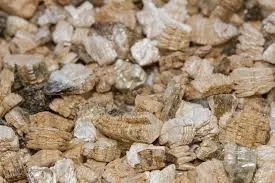Spa . 02, 2024 15:47 Back to list
refractory kiln lining material
Refractory Kiln Lining Materials An Overview
Refractory kiln lining materials play a crucial role in industrial processes that involve high-temperature operations, such as ceramics, metallurgy, and cement production
. These materials are designed to withstand extreme heat, chemical corrosion, and physical wear, ensuring the stability and efficiency of the kiln structure.One of the primary functions of refractory linings is to provide thermal insulation. This insulation is vital for maintaining the energy efficiency of industrial kilns, as it minimizes heat loss and reduces the energy required to achieve the desired temperatures. High-quality refractory materials can effectively retain heat, allowing the kiln to operate at high temperatures for extended periods, which is essential for processes like sintering and calcination.
Refractory lining materials are selected based on their composition, thermal properties, and the specific requirements of the application. Common materials used for kiln linings include alumina, silica, silica-alumina, and magnesia. Each of these materials has distinct properties that make them suitable for different types of kilns. For instance, alumina refractories are known for their high melting points and resistance to thermal shock, making them ideal for high-temperature applications.
In addition to their thermal and structural properties, refractory materials must also withstand the corrosive effects of different chemicals used during the industrial processes. For example, in the cement industry, kiln linings face exposure to various alkalis and sulfates. Thus, it is essential to choose refractory materials that can resist chemical attack, ensuring longevity and reducing maintenance costs.
refractory kiln lining material

Another factor to consider in the selection of refractory products is their ability to handle mechanical stress. Kiln linings often face abrasive wear and thermal cycling, which can lead to cracking and other forms of degradation over time. Advances in refractory technology have led to the development of materials that exhibit improved strength and durability, which are critical for maintaining the integrity of the kiln.
The installation of refractory linings is another important aspect of kiln operation. Proper installation techniques can significantly influence the performance and lifespan of the lining materials. It is essential to ensure that the linings are appropriately shaped, fitted, and bonded to the kiln structure to prevent issues such as spalling or detachment, which can lead to operational inefficiencies and hazardous conditions.
In recent years, research and development in refractory materials have focused on enhancing performance through innovative formulations and manufacturing techniques. For example, the introduction of advanced ceramic materials and nanotechnology has resulted in linings that offer superior thermal and mechanical properties compared to traditional materials.
In conclusion, refractory kiln lining materials are vital components in ensuring the efficient and safe operation of high-temperature industrial processes. Their selection, installation, and maintenance are critical for optimizing kiln performance and longevity. As industries continue to evolve, ongoing advancements in refractory technology will likely lead to more robust and efficient materials, further contributing to the sustainability and productivity of high-temperature processing operations.
-
Top Tundish Covering Agent Exporters | Premium Quality Solutions
NewsAug.02,2025
-
First Bauxite Exporters | AI-Optimized Supply
NewsAug.01,2025
-
Low Nitrogen Graphitized Petroleum Coke Supplier
NewsJul.31,2025
-
Premium Vermiculite Soil Exporters - Boost Plant Growth
NewsJul.31,2025
-
Premium Building Material for Round Wall Exporters, Manufacturers & Suppliers
NewsJul.30,2025
-
Top Carbon Petroleum Coke Exporters – Reliable Quality & Fast Delivery
NewsJul.30,2025
